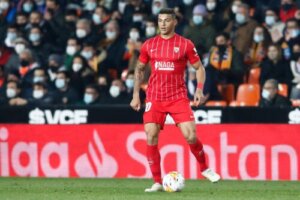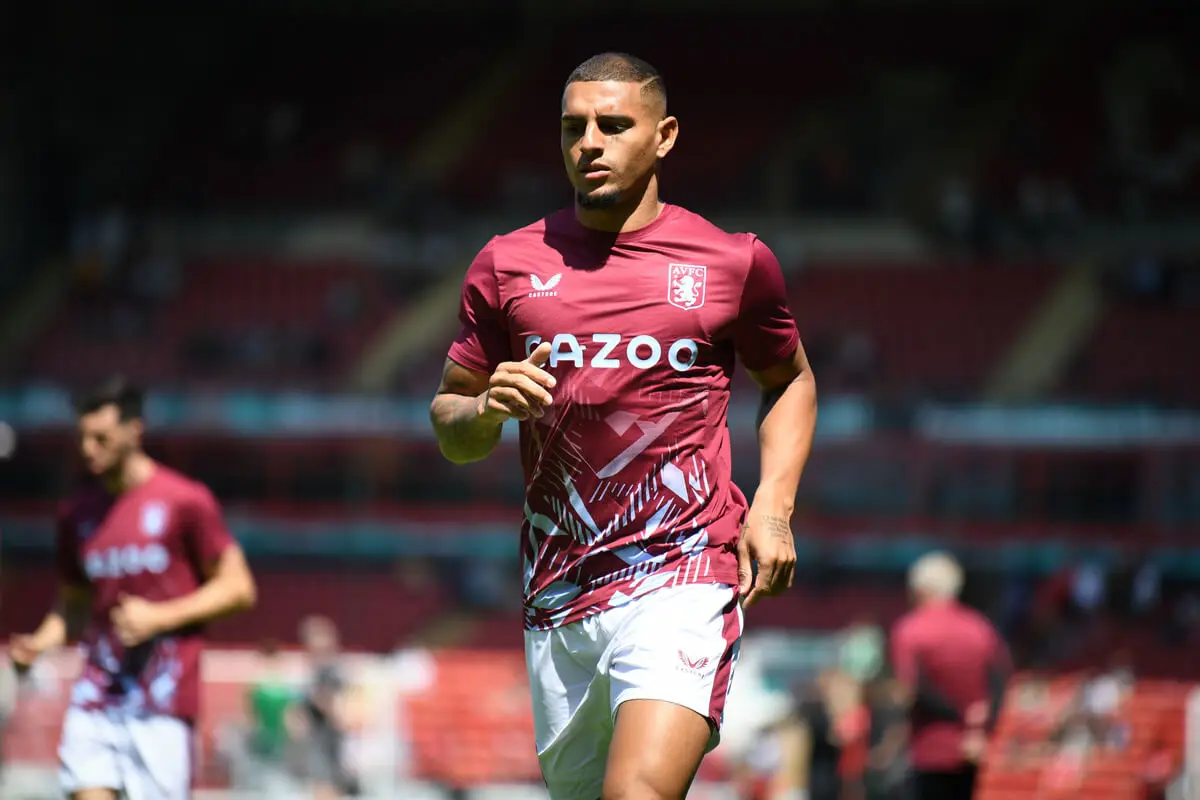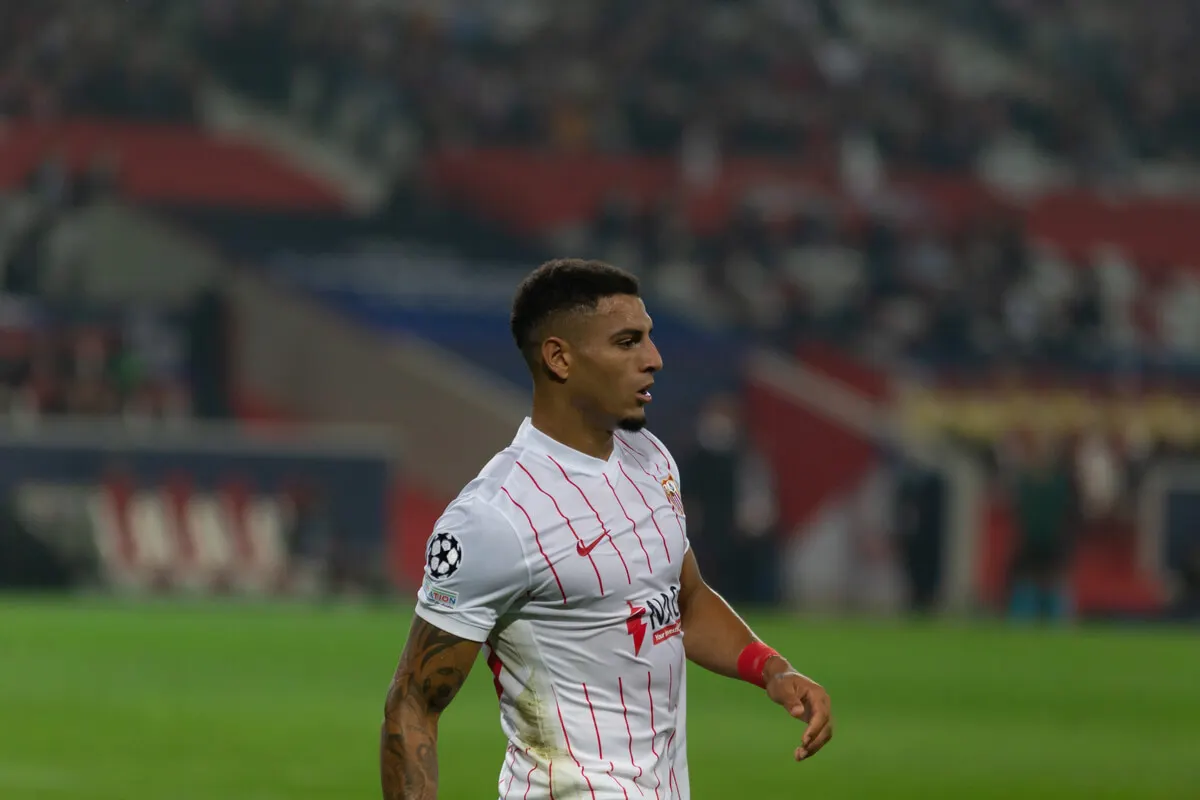Diego Carlos: His Musculature and a Serious Achilles Tendon Injury


Reviewed and approved by the doctor Leonardo Biolatto
To be a defender in today’s professional soccer, physical strength is an almost indispensable quality. This is confirmed by Diego Carlos Silva, a player who for several years has been taking advantage of his musculature to perform better on the field.
The Brazilian player, who played for Sevilla FC and now defends the colors of Aston Villa in England, is a prime example of the optimization of the body in pursuit of a positive result. His training and genetic predisposition have allowed him to generate muscle mass that’s extremely beneficial for the role he plays in his teams.
How does Diego Carlos play?
Before going deeper into how Diego Carlos got the muscles he has, it’s first worth describing his style of play. The Brazilian is 29 years old, 1.85 meters tall, and weighs 79 kilograms. His prime leg is his right leg, and he can play in either of the two central defensive positions.
The defender has often been described as “a rock.” Although he’s not extremely large, he is strong and has robust musculature to his credit. His main virtue is in one-on-one confrontations, an instance of the game in which he fails very little.
He’s not a fast defender, although he doesn’t suffer too much when his team leaves free spaces behind. His positioning and ability to anticipate and cut off attacks at the right moment make up for it.
In addition, the fact that he knows he’s stronger than the others plays in his favor. Sometimes, he can even kick a little too much, but he has only been sent off six times -all for a double yellow card – in 8 total seasons as a professional footballer.

Diego Carlos’ physique
Contrary to what one might think, Diego Carlos has said that he doesn’t usually do too many exercises in the gym. He’s rather dedicated to functional movements and stretching. His musculature is developed by his genetics.
Other footballers, such as Adama Traoré, say the same as Diego Carlos regarding the ability to develop muscle mass without the need to spend days doing weights. Thanks to his natural “gift,” he can instead focus his routines on gaining more power, explosiveness, and speed.
On social networks, it can be seen how the Brazilian defender trains a lot using his own weight. Sometimes, he adds some complementary elements, such as elastic bands or a fitball.
Of course, the player must comply with the workouts set by his team’s physical trainer. The routines for soccer teams usually include gym work with exercises to strengthen muscles in isolation.
However, Diego Carlos says that he’s not particularly attracted to this type of training and that he limits himself to doing what is indispensable, unlike other teammates who do extra exercises. Of course, everything depends on each player’s build, genetics, and needs.
We think you may also enjoy reading this article: How Many Games do Soccer Players Play Per Year and What Are the Risks?
Injuries are not abundant in his career
In addition to being good for his game, Diego Carlos’ physique helps him to be protected from muscular injuries, which are practically unknown to him. In his career, he has only had a few weeks off due to trauma or injuries as a result of friction in the game.
The soccer player has suffered from almost no muscular injuries that have kept him off the field.
However, unforeseen injuries can happen. Diego Carlos suffered from an Achilles tendon injury in one of his first matches with the London team. Thus, he will be sidelined for approximately six months.
This means that the player will not be able to participate in the FIFA World Cup in Qatar.

Like this article? You may also like to read: The Women’s EURO Cup: Female Soccer Players Capture the World’s Attention
Diego Carlos and a recovery that will be benefited by his physique
The positive side of the situation is that Diego Carlos’ genetics will allow him to recover the lost muscle mass with relative ease. This is a consequence of muscle memory, a capacity of the body to retain the reactions of the fibers to certain stimuli, even without having received them for a long time.
In any case, it’s clear that the soccer player will have to face a post-surgical rehabilitation process like any other. He will also surely have to resort to gym machines to strengthen his atrophied muscles again.
Until now, Diego Carlos’ musculature and physique in general have been an elemental form of strength in his sporting development. They will also bring him many benefits for this stage of his career and his remaining years in professional soccer.
All cited sources were thoroughly reviewed by our team to ensure their quality, reliability, currency, and validity. The bibliography of this article was considered reliable and of academic or scientific accuracy.
- Sierra, J. 20 de julio de 2022. En Inglaterra ya conocen el físico de Diego Carlos. Estadio Deportivo. https://www.estadiodeportivo.com/futbol/sevilla-fc/inglaterra-conocen-fisico-diego-carlos-20220720-402207.html
- Piqueras, A. 1 de diciembre de 2019. El triunfo de la genética: un portento físico llamado Diego Carlos. As. https://as.com/deporteyvida/2019/12/01/portada/1575189321_754108.html
- Diego Carlos. Transfermarkt. https://www.transfermarkt.es/diego-carlos/profil/spieler/329145
- Diego Carlos y su pésimo comienzo en Aston Villa: se rompió el tendón de Aquiles. 15 de agosto de 2022. DirecTV Sports. https://www.directvsports.com/noticia/diego-carlos-y-su-pesimo-comienzo-en-aston-villa-se-rompio-el-tendon-de-aquiles
- Lesiones de Diego Carlos. Fichajes.com. https://www.fichajes.com/jugador/diego-carlos/lesiones
This text is provided for informational purposes only and does not replace consultation with a professional. If in doubt, consult your specialist.








